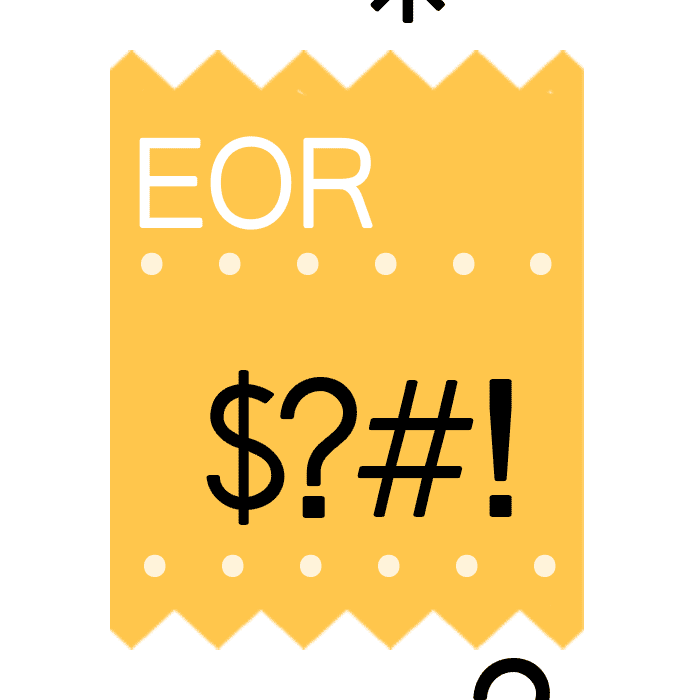Sedgwick: Sketchy EOR Math for LA Unified School District

Sedgwick recently returned an Explanation of Review (EOR) that failed to fulfill a crucial requirement: showing how Sedgwick actually calculated the reimbursement amount paid. Moreover, the calculations on the paper version of the EOR do not match the calculations on the electronic version of the same EOR.
In these two EORs for a single bill, Sedgwick treats reimbursement calculations like Pollock treated paint, splattering figures around the documents seemingly at random. Sedgwick’s apparent sloppiness is troubling, as it creates an opening for incorrect and even potentially deceptive calculations that cannot be verified by anyone, including the employer.
The self-insured employer, Los Angeles Unified School District, should insist that Sedgwick do what every LA grade-schooler must: show their work.
Sedgwick’s Opaque AND Incorrect Calculations
In the past, we’ve called Sedgwick out for muddying their calculations with nonsensical EORs. Intentionally or not, knowingly or otherwise, returning an EOR that doesn’t tell the whole story is unacceptable — particularly since Sedgwick does so as a third-party claims administrator, on behalf of LA Unified School District.
Below, we reveal Sedgwick’s incomprehensible math on both the electronic and paper versions of the EORs sent to the provider. This apparent lack of ability to correctly use basic math skills should raise questions for self-insured employers, as well as for the providers who receive payment from Sedgwick:
- Which version of reimbursement calculations is Sedgwick reporting to its client, LA Unified School District?
- With such mathematical chaos on the EOR, how can the LA Unified School District know if Sedgwick is properly reimbursing the providers who treat their employees?
Sedgwick’s Dueling Math-Challenged EORs
Displayed below is the mandated electronic EOR (835) that Sedgwick sent to the provider. As indicated, none of the numbers in this EOR add up:
- The number of ‘Units’ for each code is incorrectly listed as ‘0.0.’
- Sedgwick incorrectly repeats the ‘Adjustment’ amounts for each billing code.
- The ‘Payment’ listed for each code fails to equal the difference between the ‘Charge’ amounts and the ‘Adjustments.’
- The Total ‘Payment’ fails to sum the (incorrect) Payment amounts.
(DaisyBill automatically voids electronic EORs when the claims administrator sends EORs containing nonsensical math.)
For the exact same bill, displayed below is the paper EOR that Sedgwick mailed to the provider. This Sedgwick paper EOR offers new (incorrect) math:
- The ‘Billed Amounts’ are incorrectly listed as $0.00.
- ‘FS/UCR Reduction’ amounts differ from the Adjustment amounts reported by the electronic EOR.
- The ‘Network Reduction’ was NOT reported by the electronic EOR.
- From this paper EOR there is no way to calculate how Sedgwick determined the ‘Recommended Allowance.’
What does the LA Unified School District make of this? What can a provider possibly make of this?
More importantly, which version of Sedgwick’s dubious calculations does Sedgwick report to LA Unified School District? No matter the version, none of them tell a story anyone can follow.
For the sake of transparency in workers’ comp, all parties concerned should insist that Sedgwick dust off the company abacus and return EORs that 1) match and 2) report comprehensible arithmetic. As such, the above is not an “Explanation,” of anything. Rather, it may be better described as an “Obfuscation” of Review (OOR) — and an act of non-compliance.
Get paid in full and on time. With quick & easy tools for authorization, billing, and appeals, DaisyBill helps protect your practice’s revenue. Reach out to learn more.
CONTACT DAISYBILL
DaisyBill provides content as an insightful service to its readers and clients. It does not offer legal advice and cannot guarantee the accuracy or suitability of its content for a particular purpose.



.png)
.gif)
